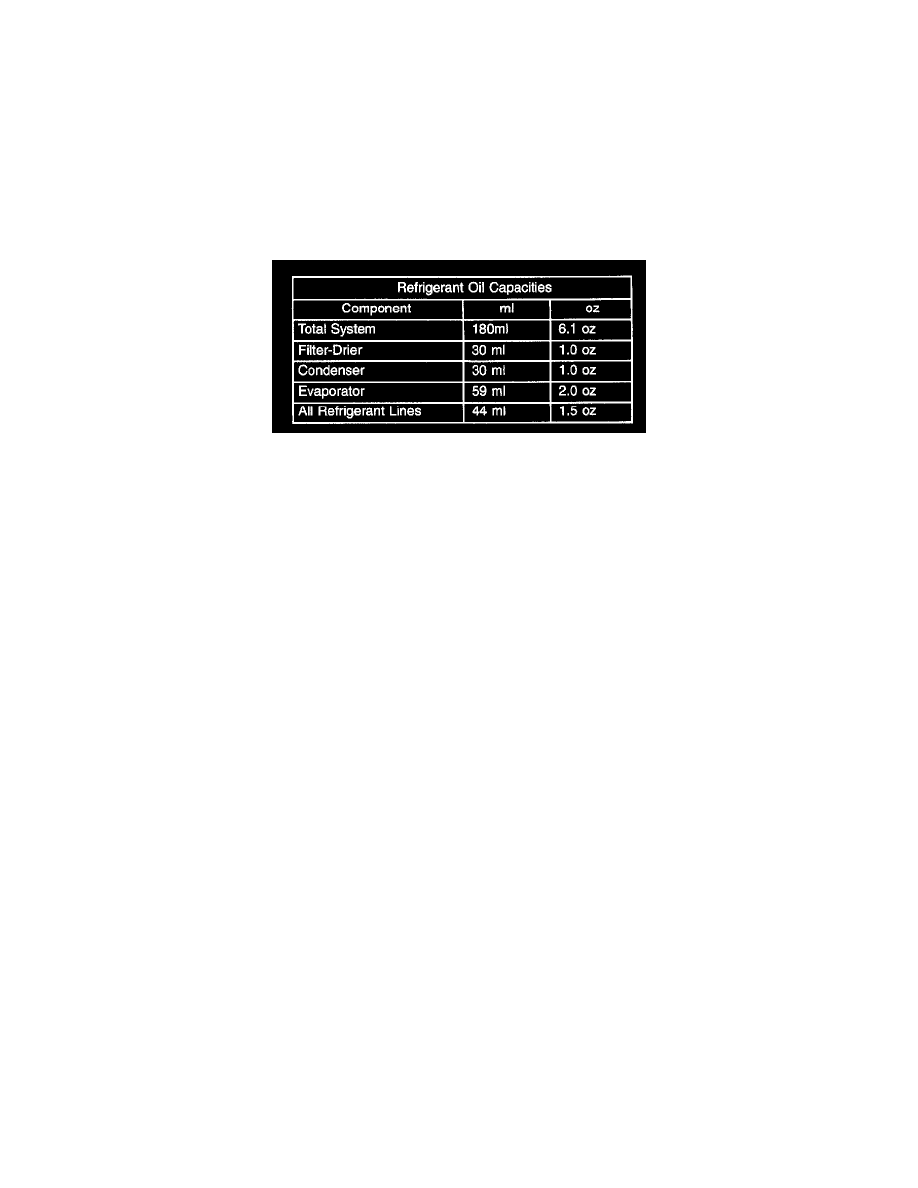Neon R/T L4-2.0L VIN F HO (2001)

Refrigerant Oil: Service and Repair
REFRIGERANT OIL LEVEL CHECK
It is important to have the correct amount of oil in the A/C system to ensure proper lubrication of the compressor. The little oil will result in damage to
the compressor. Too much oil will reduce the cooling capacity of the system and consequently result in higher discharge air temperatures.
NOTE: The oil used in the compressor is ND8 PAG R-134a refrigerant oil. Only refrigerant oil of the same type should be used to service the
system. Do not use any other oil. The oil container should be kept tightly capped until it is ready for use. Tightly cap afterwards to prevent
contamination from dirt and moisture. Refrigerant oil will quickly absorb any moisture it comes in contact with. Special effort must be used to keep all
R-134a system components moisture-free. Moisture in the oil is very difficult to remove and will cause a reliability problem with the compressor.
It will not be necessary to check oil level in the compressor or to add oil unless there has been an oil loss. Oil loss at a leak point will be evident by the
presence of a wet, shiny surface around the leak.
Refrigerant Oil Capacities
When an air conditioning system is first assembled, all components (except the compressor) are refrigerant oil free. After the system has been charged
with R-134a refrigerant and operated, the oil in the compressor is dispersed through the lines and components. The evaporator, condenser, and filter-
drier will retain a significant amount of oil, refer to the Refrigerant Oil Capacities chart. When a component is replaced, the specified amount of
refrigerant oil must be added. When the compressor is replaced, the amount of oil that is retained in the rest of the system must be drained from the
replacement compressor. When a line or component has ruptured and oil has escaped, the compressor should be removed and drained. The filter-drier
must be replaced along with the ruptured part. The oil capacity of the system, minus the amount of oil still in the remaining components, can be
measured and poured into the suction port of the compressor.
SERVICING REFRIGERANT OIL LEVEL
CAUTION: The refrigerant oil used in a R-134a A/C system is unique. Use only oils which were designed to work with R-134a refrigerant. The oil
designated for this vehicle is ND8 PAG (polyalkalene glycol).
Recovery/recycling equipment Will measure the lubricant being removed. This is the amount of lubricant to be added back to the system. If a new
compressor is being installed, drain lubricant from the old compressor, measure the amount drained and discard old lubricant. Drain the lubricant from
the new compressor into a clean container. Return the amount of lubricant measured from the old compressor, plus the amount reclaimed from the
system back into the new compressor.
1. Discharge refrigerant system using recovery/recycling equipment if charge is present.
2. Disconnect refrigerant lines from A/C compressor. Cap the open lines to prevent moisture from entering system.
3. Remove compressor from vehicle.
4. From suction port on top of compressor, drain lubricant from compressor.
5. Add system capacity minus the capacity of components that have not been replaced. Add lubricant through the suction port on compressor. This is
not to exceed 180 ml (6.10 oz.) in total.
6. Install compressor and connect refrigerant lines. Then evacuate and charge refrigerant system.
